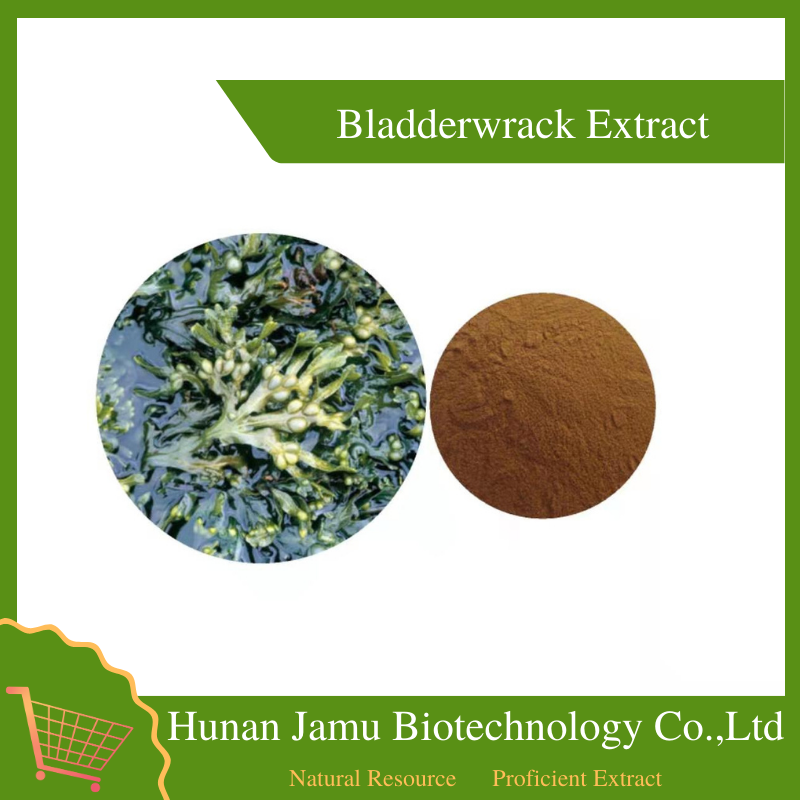 You are here:
Home
> Product Center
> Vegetable & Fruit Ingredient
> View Details
You are here:
Home
> Product Center
> Vegetable & Fruit Ingredient
> View Details


 You are here:
Home
> Product Center
> Vegetable & Fruit Ingredient
> View Details
You are here:
Home
> Product Center
> Vegetable & Fruit Ingredient
> View Details

【Product Name】: Bladderwrack Extract
【Botanical Name】: Fucus vesiculosus L.
【Part used】: Leaf
【Appearance】: Brownish Yellow powder
【Specification】: 4:1 10:1 / Regular Powder / Iodine 0.1-1% / Fucoxanthin 25-30%
【Storage Period】: 24 Months
【Package】: 1kg/bag 25kg/drum
【Test Method】: HPLC
【Storage Conditions】: Store in cool and dry places. Keep away from strong light and heat.
Description
The algae are perennial, flat or cylindrical, with bifurcated branches or radial branches around the main stem. The algae is yellowish brown, soft leather, and turns black after drying. It is generally 6-7cm high, and some can reach 14.5cm. The stalk is sub-cylindrical and shorter. The upper bifurcation branches 2-8 times, and the upper branch branches. The angles are narrow and unequal, and the internodes of the upper branch are longer than the lower ones; the lower bifurcated branches are more regular, and the forked branches have a wider angle. During reproduction, the top of the bifurcated branches swells to form the reproductive receptacle, which is spindle-shaped, with thicker branches and special stalks. In autumn, the genital receptacle becomes nearly cylindrical or stick-shaped. The mature genital receptacle is long-angled; there are obvious nodular tumor-like protrusions on the surface, making the branches thick and deformed.
The medulla of the algae is composed of longitudinal filamentous cells with mucus. The base retainer is conical and disc-shaped. The algae are in a mass, black, with hoarfrost on the surface. After being flattened, it is 6-7cm long, and some can be as long as 14cm. The main stem is very short, with forked branches, 2-8 times. Sometimes it can be seen that there are long horn-shaped reproductive trays on the top of the branches, and there are tumor-like protrusions on the surface. The branches become thick and deformed. The holder has a cone-shaped disc shape. Slightly fishy and salty.
Chemical Composition
It mainly includes mucus, alginate, mannitol, fructitol, β-carotene, zeaxanthin, volatile oil, iodine, bromine, potassium and other minerals.